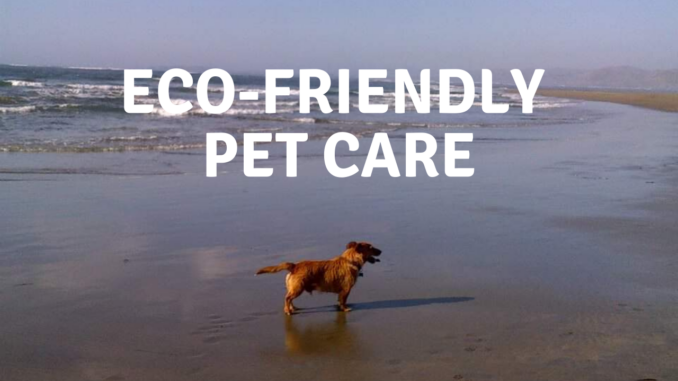
We live in a wasteful world. Since the industrial revolution, our economy has been based on mass production. Cars, clothes, and electronics are created in huge numbers. Consumers are encouraged to buy, buy, buy, then discard and buy again when a new model comes out. Much of this discard ends up in landfills, polluting the ground while factories pollute the air producing anew.
We’re all aware of this vicious cycle, or should be by now. Just watch any Netflix documentary to get up to speed. While these global problems won’t be solved overnight, we can all take steps to reduce both consumption and pollution.
What, specifically, can pet owners do to reduce their environmental impact? From waste management to toys there are better choices we can make to do our part.
Buy quality
Whatever you buy, buy it to last. As mentioned, a major factor in our garbage problem is mass production of cheap (or not so cheap) disposable goods. I don’t like shopping, so when I buy things I want to have and use them for as long as possible. Online shopping is so much better for folks like me than going to a shop and browsing the aisles, but I still like to limit my purchases. A good leather leash should last for years. I’d rather invest in such a product rather than in a cheap one that will fray and come apart quicky.
Buy in bulk
Plastic is enemy number one of the environment. It fills landfills and doesn’t degrade for thousands of years, leaching toxins into the ground all the while. Some plastics can be recycled, but that process is also environmentally harmful, so reducing plastic use is key to an eco-friendly lifestyle. Most pet foods come in plastic bags which cannot be reused. For this reason, I recommend buying the largest bag you practically can and storing the food in a tightly sealed bin. How much you can buy will of course depend on the size and number of pets in your home.
If you have a 5lb Chihuahua you probably won’t want to stock up on 50lb of kibble, but if you have two German Shepherds or 10 cats, buying in bulk will be both eco and wallet friendly. Check expiration dates on the bags to be sure the food will remain fresh until it is used up. Treats can also be purchased in bulk. Dry cookies have a long shelf life and can be purchased in large boxes.
Make your own food
One way to avoid plastic bags is to make your own pet food. Opinions vary widely on this subject, but done properly it can be a healthful and likely more palatable option for your pets. Check out these suggestions from one of my favorite cooking sites, All Recipes. These are mostly for dogs. For kitty recipes check out Feline Living. One benefit of higher quality food, whether purchased or made at home, is less poop! Cheap foods have a lot of fillers like corn and meat by-products which are not only unhealthy but increase stool volume, which leads to our next topic.
Waste management
According to a study done by UCLA, pets produce more than five million tons of waste yearly, and that’s just in the United States! That’s a lot of poop, and plastic, as most people dispose of both dog and cat feces in plastic bags. While care must be taken in the disposal of any fecal matter which can contain disease pathogens, there are some things pet owners can safely do to reduce environmental impact.
The most obvious solution is to flush poop down the toilet. Sewer systems are designed to remove and safely process sold waste, so this can be a good option in some situations. If you have a 5lb Chihuahua who poops on a potty pad, it’s easy enough to pick up the little turds with a piece of toilet paper and flush them. If you have a Great Dane, maybe not. Some people flush cat poop down the toilet, but the issue here is the litter. Even so-called “flushable” litter can cause expensive plumbing problems. If you flush, make sure the waste is completely free of any litter material.
Plastic bags are typically used to throw away dog and cat poop because they cut down on odor and keep one’s hands clean. While paper bags or newspapers can be used, there is more of a risk of getting fecal matter on your hands and exposing yourself to pathogens. There are, however, biodegradable bags that work quite well. These can be carried on dog walks and dumped in any trash can or used at home to clean cat litter boxes. Although the poop contributes to the garbage tonnage, at least the plastic will degrade in a reasonable amount of time.
Dog poop can be composted, but it must be done properly to be safe. It shouldn’t be used for vegetables or anything else for human consumption, but it can be used to nourish decorative plants, bushes, and trees. You can also set up a pet waste septic system in your yard. Such a system can be easily made from items available at any hardware store, or you can buy one on Amazon.
Toys
What’s more fun than playing with your pets? Pet shops display an array of cute items from rubber chickens to plush frogs to fake mice. Walk through any well-stocked boutique and you’ll inevitably pull out your credit card and come home with a bag of goodies. But how long will it last? Many toys last just minutes with destructive dogs, even if they cost $20! Feather toys are chewed up by cats, ropes frayed (and possibly swallowed), and plush animals are beheaded and dismembered. These cheaply made toys are bad for the environment and for your wallet as they soon end up in the garbage can.
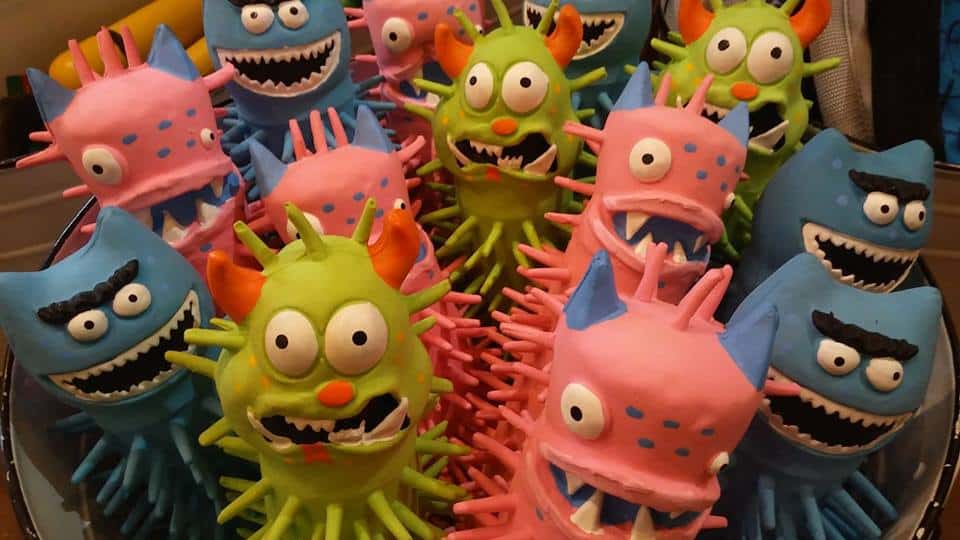
One way to give your pets more sustainable toys is to make them yourself. You can even use items you were going to throw away like toilet paper tubes, empty plastic drink bottles, and old socks. You can purchase lengths of rope from any hardware store for pennies per foot. They can even knot and burn the ends for you so they won’t fray. Choose a material and thickness suitable for your dog.
Cats love nothing better than boxes. Save all these free toys that contain your online purchases and give them to your kitties. You can also cut the sides off of an especially large box and lay them flat. My cats love sitting, rolling, and scratching on a big flat piece of cardboard. When it’s good and shredded (or if someone pees on it) it goes to recycle and I bring out the next one I have in the stash. Paper bags are another favorite. While the eco conscious shopper will usually bring their own, should you bring home a few paper sacks your kitties will thank you. Be sure to tear away any handles so they don’t get their head stuck.
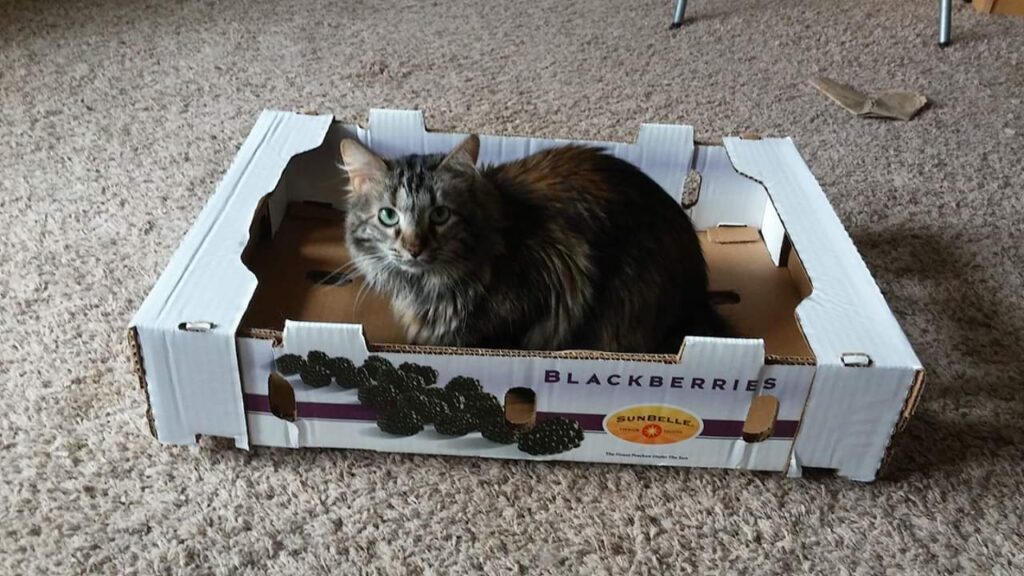
Toys made from wool and other natural materials are more sustainable and support small business owners. Kongs are very popular, versatile, and pretty much last forever. I have had good luck with Tuffy brand toys even in a houseful of heavy chewers. I have had the crab and lobster for years without a single sign of wear!
Cleaning
If you have pets, you’ll be doing a lot of cleaning. While there are a dizzying array of cleaning products on the market, a few basic ingedients are all you really need. I don’t like perfumey smells, so most cleaning products don’t appeal to me anyway with their fake lemon, flowers, or coconut smells. Who wants their home to smell like a coconut? I also don’t like chemicals, nor do I like the price tag on many of these items. $7 for a bottle of sudsy scented water? No thanks.
You can clean just about anything with water, vinegar, and baking soda. I keep a bottle of vinegar and water to clean messes on my vinyl plank and tile floors as well as counter and table tops. It cleans well and leaves a fresh light scent. If you need a more soapy soution, just add a few drops of dish detergent. Castille soap is often recommended for both natural and frugal home makers, but since I’ve never tried it I just use Dawn. Making your own cleaning solutions helps the environment by reducing the use of chemicals and by re-using the spray bottles and wash cloths.
Parasite control
Parasites are an unfortunate part of life with pets. Parasite control of all kinds consists of heavy doses of chemicals that can cause serious side effects including death. For that reason, you should limit their use and you should not attempt to make your own concoctions (for example, dividing a horse or cattle product into small doses for dogs or cats).
I’m not one of those natural pet care folks who will say you should never use chemicals, but I do advise caution. A dog or cat who is crawling with fleas or ticks or who has a massive load of interal parasites needs immediate treatment from a veterinarian.
Miss Elf, sitting here with me right now, came into the shelter I was running at the time near death from flea anemia. I swear there were more fleas than kitten, and she was cold and barely responsive. I bathed and combed out hundreds of fleas and doused her with the topical flea treatment that we used. The following morning there were hundreds more dead fleas on her bedding. I took her home to foster and here she is 12 years later. Anyone in cat rescue will understand.
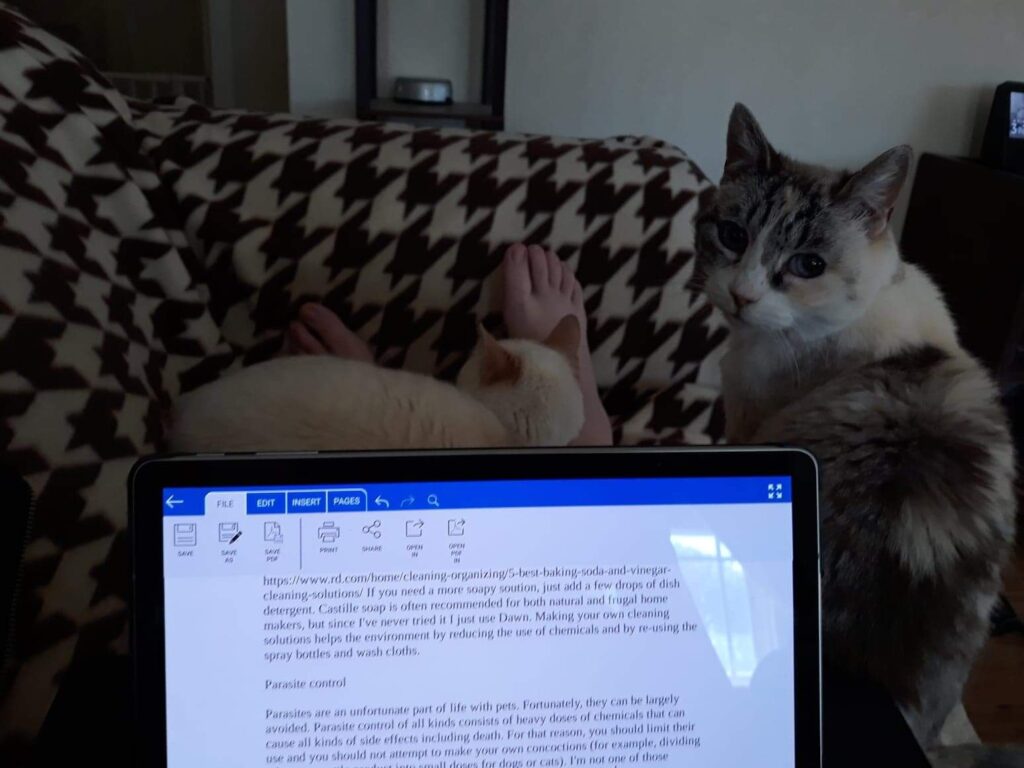
Once the serious issue has been addressed, steps can be taken to prevent it from happening again. Pets who spend most of their time indoors are less likely to pick up parasites. A clean house and yard are less inviting to parasites. Vacuum frequently and dump the contents outside in the trash right away. If possible, get rid of wall-to-wall carpeting. I did, and it improved my quality of life significantly. Vinyl plank flooring looks great and is easy to keep clean, especially in a houseful of furry critters.
Diatomaceous earth is a non-chemical powder that kills fleas and other insects both inside and out. User reviews indicate a high success rate with fleas, ants, and even cockroaches and bedbugs. This product can be a big help in both stopping and preventing infestation.
What eco friendly pet products or practices have worked for you? I’d love to hear about it in the comments.
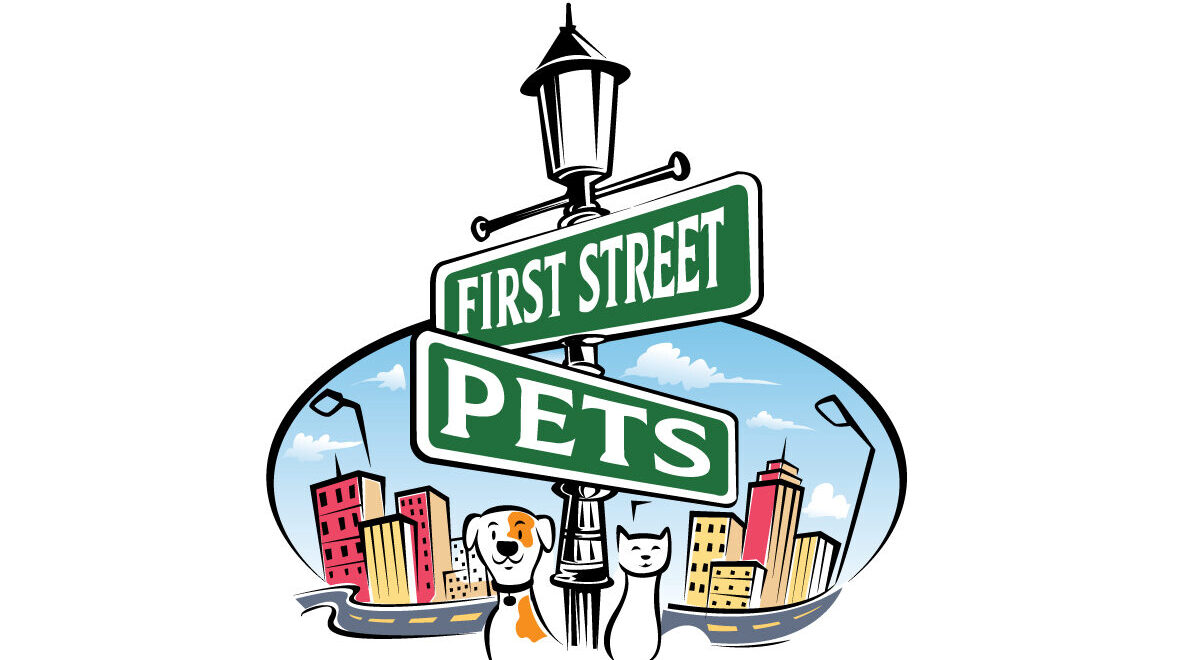

Be the first to comment